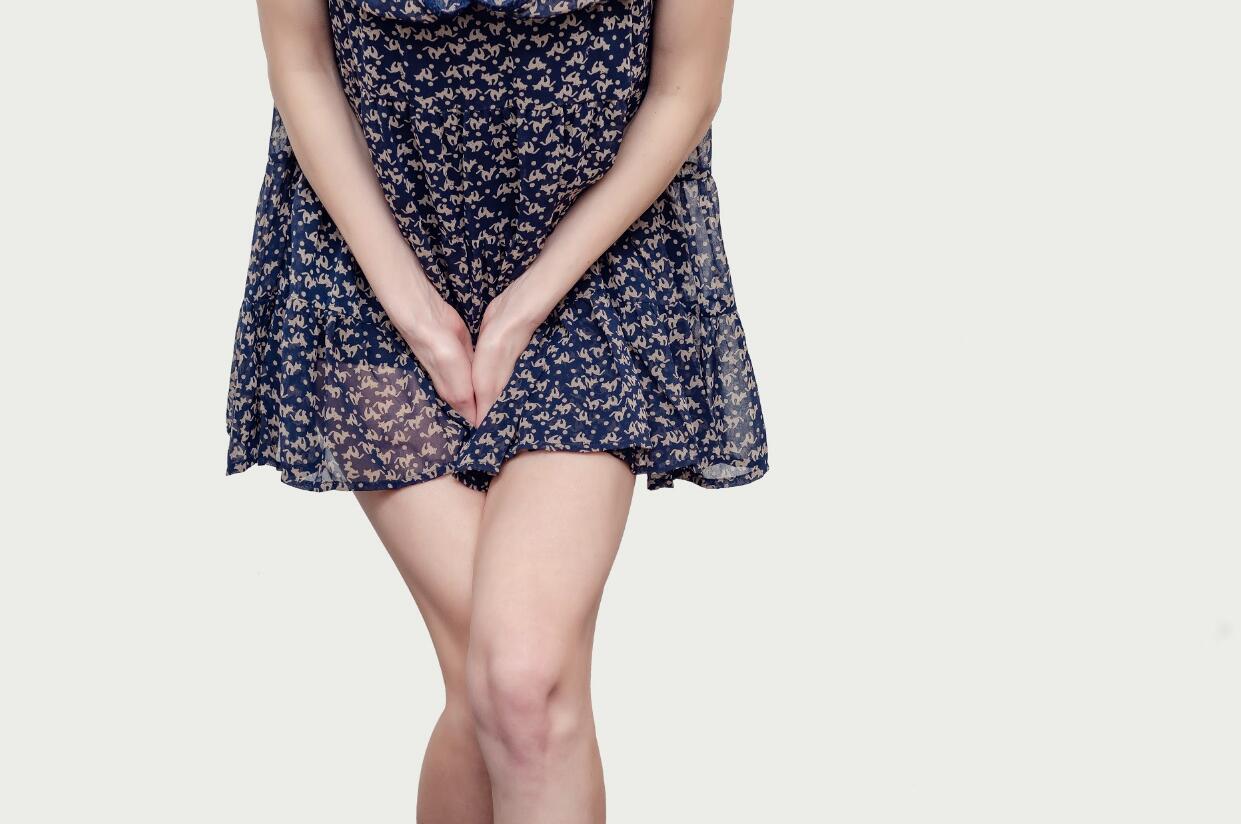
If you’ve experienced a loss of bladder control, you’ll know that it can be inconvenient, but it’s not something you’re likely to rush to talk about with friends and family. That’s too bad, because it’s a common condition, and there are many tips that can make living with it easier. For instance, you might be wondering what you can wear that’ll be fashionable while also hiding any leakage that occurs.
Some companies, like knix, make underwear specifically designed to help with incontinence. Other people use pads or other incontinence undergarments. No matter what approach you end up taking, you may worry about whether your clothing will conceal it, and how it will look if what you’re wearing underneath fails.
This article will give you six things to consider as you choose clothing to wear while dealing with urinary incontinence.
What you need to know about urinary incontinence
First, it’s worth going over some basic facts about incontinence. After all, knowing what’s going on with your body, and your condition, will play a role in picking out clothes that meet your need.
Here are the four major subtypes of urinary incontinence:
- Stress incontinence—People who suffer from this subtype of incontinence often leak urine during activities. This can happen when you sneeze, laugh, cough, lift things, run, or jump, all of which are actions that put pressure on your bladder. This usually happens because the pelvic floor isn’t supporting your bladder like it should be, which can happen after giving birth, among other reasons.
- Urge incontinence—This may be caused by a condition known as overactive bladder (OAB). If you suffer from OAB, you’ll usually feel an intense urge to urinate right away. Causes could include weak pelvic muscles, an infection, lower estrogen levels after menopause, carrying extra body weight, or nerve damage.
- Mixed incontinence—This subtype describes leakage issues caused by a combination of different problems. Doctors advise patients to pay attention to what you’re doing when you experience leakage in order to help manage the condition.
- Overflow incontinence—If you don’t empty your bladder fully when you urinate, you might suffer from overflow incontinence. Since there’s still some urine left, you could be at risk of leakage. The resulting leak is usually a small amount of urine that drips out over time rather than a large gush. (1)(2)
Depending on which of these subtypes describes your incontinence, you’ll need a different amount of protection, all of which may have an impact on which clothing fits best.
No matter what, the following six considerations will help:
-
Fabric
Before considering things like fit and style, start with something more basic: fabric.
Depending on the amount of leakage that you’re experiencing, different fabrics might make sense for you. Additionally, you can take different approaches depending on your main concerns relating to incontinence.
For example, if you’re experiencing leakage regularly, you could consider a synthetic material like polyester. Unlike a natural fabric like cotton, it won’t absorb liquid as easily. (3)
For pants, consider thicker fabrics like denim. This can help to compress padded panties or other garments you’re wearing (plus, it’s not something that people will see and think “incontinence”). (3)
Ponte is another thicker fabric that may work—especially if you’re not interested in jeans. It’s a knit made of several materials, including rayon, polyester, and a material for stretch (either elastin or spandex). Whether Ponte or denim, thick fabrics can help to keep leakage from showing, since it will take longer for fluids to show through to the other side. (3)
-
Colors
Along with the type of fabric used in the garments you’re buying, consider the colors of your clothes. One easy tip: buy darker colored clothes, since they won’t show stains or dark spots as easily. (3)
Some people who begin to suffer from incontinence worry that they’re being condemned to wearing black forever. While black will work, don’t worry; you’ve got plenty of other options, including:
- green
- blue
- brown. (3)
Don’t be afraid to experiment, and you can always try exposing a garment to a little bit of water before wearing it out if you’re particularly concerned.
Also, remember that while you’ll want to stick to darker colors for your bottoms—pants, skirts, etc.—you can still feel free to choose lighter colors (and fabrics) for your tops. Having that balance can help you to feel like you’ve got a bit more freedom in choosing your clothing. (3)
-
Patterns
If you’re worried about darker colors, another approach is to opt for garments that aren’t one color at all. Embracing patterns is a good bet if you want to make sure that there’s a bit more variation in your wardrobe.
As you try out different patterns, you’ll also get a better sense of what works and what doesn’t, based on your own personal needs. Especially for pants, skirts, and dresses, the right print or pattern can be a great way to hide leaks, while making an outfit look a little more exciting. (3)
-
Comfort
This may come as a surprise, but it’s important to be honest with yourself about what will or will not be comfortable with whatever incontinence garments you’re wearing. Some items can be swapped out easily, while you may have to avoid others in favor of a different option that works better.
For example, if you usually wear pantyhose or tights, you might get discouraged when you try to wear them with an incontinence garment. Not to fear, you’ve got options. Thigh highs stop before anything else you might be wearing, but they also go up high enough that you can wear them with a skirt without worrying they’ll fall down. (3)
On the whole, don’t be afraid to experiment, and you’ll find solutions that work for your specific needs.
-
What garments work?
It’s worth keeping a few things in mind when choosing which garment type will work if you’re wearing an incontinence garment underneath them.
For instance, a pair of jeans with a low rise? Not a great choice, since it’ll be easier to see anything bulky that you’re wearing underneath them. Things that provide a bit more coverage or a higher waist, on the other hand, could be helpful.
Here are a few choices that help in multiple ways:
Leggings
While there are leggings of all sorts, a high-waisted pair is your best bet when you’re dealing with urinary incontinence. Not only are they easy to pull on and off in the event of an urgent bathroom visit, they help to provide support for your pelvic floor by compressing the lower part of your abdomen. They also compress any bulkier underwear or pads that you may be wearing.
Dresses
Here, you should be after something billowy, but don’t worry; we aren’t talking about a Mu Mu (unless that’s what you’re looking for!).
A dress that can conceal whatever your wearing underneath can be a valuable piece of your fashion arsenal—especially if you need to wear something bulkier on a particular day or for a particular activity.
While you may worry about finding something loose that flatters your figure, rest assured that there’s something out there for you. The following are a few dress types to consider:
- Baby doll
- High collar
- Halter
- Maxi
- Shirt dress
Each of these will suit a different body type, so be sure to give things a try and figure out what works for you.
Tunics
These work great in combination with leggings, so you can get the added benefit of support and concealment while adding an interesting note up top.
High-waisted jeans
Again, these will help in a few ways. Denim is a good fabric choice if you’re worried about leakage—especially if it’s a dark wash. The high waist, along with being on-trend right now, will help to support your pelvic floor, and will conceal anything that you’re wearing underneath (like with leggings).
- Building a wardrobe
Urinary incontinence can be a lifelong condition, or something that only occurs in certain circumstances. As you come to understand your own condition, and what it means for your future, don’t neglect your clothing. It may seem painful at first to decide what you’ll be wearing in the future based around something like incontinence, but you’ll be surprised how much of a positive difference it can make to acknowledge the problem you have, and then make sure that you’ve got enough of the right clothing to suit your needs.
What does a full wardrobe entail? Something like 15 to 30 outfits. It may take you some time to build back up the clothing that you have, but similar to buying clothes that fit, rather than forcing yourself into clothes that are too small, you’ll feel better if you’ve got comfortable clothes that look good. You can regain some of the confidence that you may have lost upon learning about your incontinence. (3)
Conclusion
As you keep these six fashion considerations in mind, remember that urinary incontinence is a common problem, and that there are plenty of solutions out there! You don’t need to stay inside for the rest of your life, or even for as long as the problem lasts. By choosing the right wardrobe—based around fabric, color, pattern, and garments—you can recover some confidence, get active, and get back to living your life in style.
References:
- “Urinary Incontinence,” Source: https://my.clevelandclinic.org/health/diseases/17596-urinary-incontinence
- “Urinary Incontinence in Women: Evaluation and Management,” Source: https://www.aafp.org/afp/2000/1201/p2433.html
- “What to Wear When You Have Urinary Incontinence,” Source: https://www.bloodandmilk.com/what-to-wear-when-you-have-urinary-incontinence/



